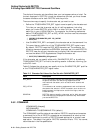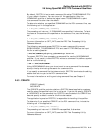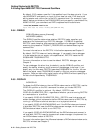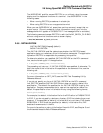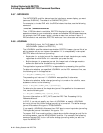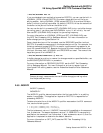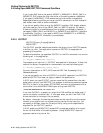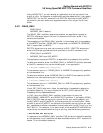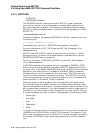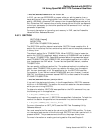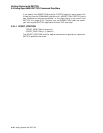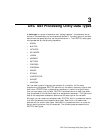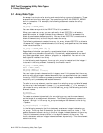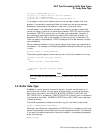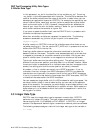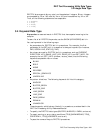Getting Started with DECTPU
2.6 Using OpenVMS EDIT/TPU Command Qualifiers
2.6.12 /RECOVER
/RECOVER
/NORECOVER (default)
The /RECOVER qualifier determines whether DECTPU reads a keystroke
journal file at the start of an editing session to recover edits made during a
prior interrupted editing session. For example, the following command causes
DECTPU to recover the edits made in a previous EVE editing session on the file
NOTES.TXT:
$ EDIT/TPU/RECOVER notes.txt
To determine whether you specified /RECOVER on the DCL command line, use
the following call:
x := GET_INFO (COMMAND_LINE, "recover");
The preceding call returns 1 if /RECOVER was specified, 0 otherwise.
For more information on GET_INFO, see the DEC Text Processing Utility
Reference Manual.
DECTPU uses /RECOVER to recover a keystroke journal file only. In buffer-
change journaling, to recover the changes made to a specified buffer, use the
RECOVER_BUFFER built-in procedure.
For more information on RECOVER_BUFFER, see the DEC Text Processing
Utility Reference Manual.
If DECTPU encounters and executes the built-in procedure JOURNAL_OPEN
while running a layered application, by default DECTPU opens the journal file
for output only. If you specify /RECOVER when invoking DECTPU with a layered
application, then when the built-in procedure JOURNAL_OPEN is executed,
the keystroke journal file is opened for input and output. DECTPU opens the
input file to restore whatever commands it contains. Then DECTPU continues
to journal keystrokes for the rest of the editing session or until a statement that
contains the built-in JOURNAL_CLOSE is executed.
When you recover an editing session, every file used during the session must
be in the same state as it was at the start of the session being recovered. Each
terminal characteristic must also be in the same state as it was at the start of the
editing session being recovered. If you have changed the width or page length of
the terminal, you must change the attribute back to the value it had at the start
of the editing session you want to recover. Check especially the following values:
• Device type
• Edit mode
• 8-bit
• Page length
• Width
If the journal file has a different name from the input file, you must include both
/JOURNAL and /RECOVER with the EDIT/TPU command. For example, if you
want to use the keystroke journal file SAVE.TJL to recover the edits you made to
a file called LETTER.DAT, enter the following command on the DCL command
line:
2–18 Getting Started with DECTPU



